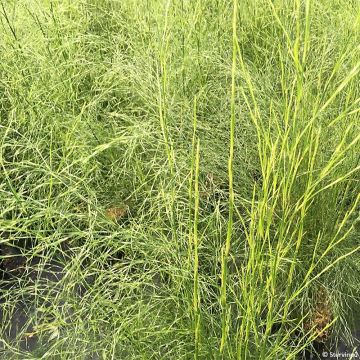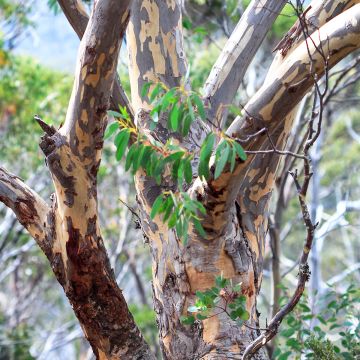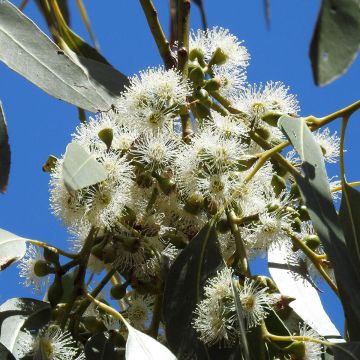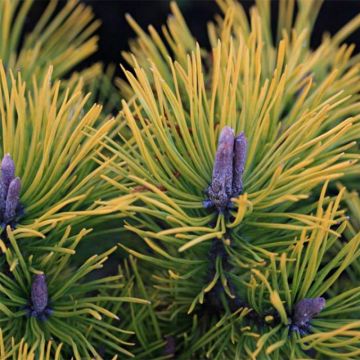

Apodasmia similis - Restio
Apodasmia similis
Apodasmia similis
Oioi, Jointed Wire Rush
Special offer!
Receive a €20 voucher for any order over €90 (excluding delivery costs, credit notes, and plastic-free options)!
1- Add your favorite plants to your cart.
2- Once you have reached €90, confirm your order (you can even choose the delivery date!).
3- As soon as your order is shipped, you will receive an email containing your voucher code, valid for 3 months (90 days).
Your voucher is unique and can only be used once, for any order with a minimum value of €20, excluding delivery costs.
Can be combined with other current offers, non-divisible and non-refundable.
Why not try an alternative variety in stock?
View all →This plant carries a 24 months recovery warranty
More information
We guarantee the quality of our plants for a full growing cycle, and will replace at our expense any plant that fails to recover under normal climatic and planting conditions.
Would this plant suit my garden?
Set up your Plantfit profile →
Description
Apodasmia similis (synonym Leptocarpus similis) is part of a group of large perennials from the southern hemisphere that resemble grasses, reeds or bamboo and are commonly called Restios. This one, with its impressive stature, may not be the hardiest, but it is one of the most beautifully coloured and most adaptable to different growing conditions. The plant forms a dense clump of slender stems punctuated by brown bracts, with a gray-green colour that turns to yellow-green and then orange at the end of the season, adorned with clusters of lovely red flowers in summer. This plant is original, robust, and decorative, suitable for cultivation in mild climates, or in a large container to overwinter in a protected place.
Apodasmia similis is a plant in the Restionaceae family. It is a botanical Restio native to New Zealand, found particularly in coastal regions, on moist and salty soils, as well as in marshy areas or along highways. This plant prefers moist or even flooded areas and is perfectly adapted to coastal conditions, but it can also tolerate dry periods once established. It is still very rarely planted in our gardens, and its hardiness in European climates is not well tested. Some sources indicate down to -8°C (17.6 °F) in extreme cases.
In favourable climates this large herbaceous perennial forms a clump of emerging stems, slightly tapering upwards. Its growth is quite slow, and the plant has a powerful rhizomatous stump that expands over time without becoming invasive. In the ground it will reach about 1 m (3 in 4 ft) in all directions. The plant develops culms or slender stems (1.5 to 2.5 mm (0.1 - 0.1 in) in diameter), rigid, with a grey-green, olive green, or reddish color, on which decorative nodes with short brown foliar sheaths are visible. The stems do not bear true leaves. At the end of each branch, male or female inflorescences appear depending on the individual. This plant is dioecious, meaning there are separate male and female plants. Flowering occurs in June-July depending on the climate, in the form of long spikes of bright red colour in females, and a reddish-brown colour in males, followed by the formation of shiny brown capsules on females in the presence of male plants. Although theoretically evergreen, the vegetation will be destroyed by frost, but a well-established plant will regenerate from the stump in spring. In its country of origin, its depolluting properties are used in lagoon systems or to drain excessively wet areas.
Apodasmia similis is a colourful and extraordinary grass that rarely goes unnoticed by those who have seen it in its native lands. It can be planted in the ground in our coastal regions if spared from severe frosts, where it will make a sensation both on the banks of water features where it appreciates the moist soil, or in much drier sandy soil. In colder climates it can be used to add very effective decoration on a terrace and then be overwintered. Whether in the ground or in a pot, its combination with the astonishing Boronia, bamboos, Nandina, Dierama, Callistemon or other grasses with a more contemporary look is always successful. Its flowers are very beautiful in dried bouquets.
Apodasmia similis in pictures




Plant habit
Flowering
Foliage
Botanical data
Apodasmia
similis
Restionaceae
Oioi, Jointed Wire Rush
Leptocarpus similis
Oceania
Other Restios
View all →Planting and care
Apodasmia similis is planted in spring, after the last frost in cool regions, preferably in early autumn in milder climates. It is an excellent plant for the seaside. Install it in well-prepared and properly loosened soil. It is not very picky about the nature of the soil, which can be clayey, loamy, sandy, even slightly calcareous, or on the contrary slightly acidic. Choose a very sunny site. Protect the stump with a thick protective mulch in winter. It is well adapted to mild oceanic climates. Make sure it does not lack water during installation. In case of a very dry summer, a few generous waterings will be welcome. It requires no particular maintenance and has no enemies in our climates. In pots, also ensure that the plant does not lack water and provide green plant fertiliser from spring to autumn, diluted in the watering can, every 15 days.
Propogation is done by dividing the clumps in spring.
Planting period
Intended location
Care
Planting & care advice
This item has not been reviewed yet - be the first to leave a review about it.
Similar products
Haven't found what you were looking for?
Hardiness is the lowest winter temperature a plant can endure without suffering serious damage or even dying. However, hardiness is affected by location (a sheltered area, such as a patio), protection (winter cover) and soil type (hardiness is improved by well-drained soil).

Photo Sharing Terms & Conditions
In order to encourage gardeners to interact and share their experiences, Promesse de fleurs offers various media enabling content to be uploaded onto its Site - in particular via the ‘Photo sharing’ module.
The User agrees to refrain from:
- Posting any content that is illegal, prejudicial, insulting, racist, inciteful to hatred, revisionist, contrary to public decency, that infringes on privacy or on the privacy rights of third parties, in particular the publicity rights of persons and goods, intellectual property rights, or the right to privacy.
- Submitting content on behalf of a third party;
- Impersonate the identity of a third party and/or publish any personal information about a third party;
In general, the User undertakes to refrain from any unethical behaviour.
All Content (in particular text, comments, files, images, photos, videos, creative works, etc.), which may be subject to property or intellectual property rights, image or other private rights, shall remain the property of the User, subject to the limited rights granted by the terms of the licence granted by Promesse de fleurs as stated below. Users are at liberty to publish or not to publish such Content on the Site, notably via the ‘Photo Sharing’ facility, and accept that this Content shall be made public and freely accessible, notably on the Internet.
Users further acknowledge, undertake to have ,and guarantee that they hold all necessary rights and permissions to publish such material on the Site, in particular with regard to the legislation in force pertaining to any privacy, property, intellectual property, image, or contractual rights, or rights of any other nature. By publishing such Content on the Site, Users acknowledge accepting full liability as publishers of the Content within the meaning of the law, and grant Promesse de fleurs, free of charge, an inclusive, worldwide licence for the said Content for the entire duration of its publication, including all reproduction, representation, up/downloading, displaying, performing, transmission, and storage rights.
Users also grant permission for their name to be linked to the Content and accept that this link may not always be made available.
By engaging in posting material, Users consent to their Content becoming automatically accessible on the Internet, in particular on other sites and/or blogs and/or web pages of the Promesse de fleurs site, including in particular social pages and the Promesse de fleurs catalogue.
Users may secure the removal of entrusted content free of charge by issuing a simple request via our contact form.
The flowering period indicated on our website applies to countries and regions located in USDA zone 8 (France, the United Kingdom, Ireland, the Netherlands, etc.)
It will vary according to where you live:
- In zones 9 to 10 (Italy, Spain, Greece, etc.), flowering will occur about 2 to 4 weeks earlier.
- In zones 6 to 7 (Germany, Poland, Slovenia, and lower mountainous regions), flowering will be delayed by 2 to 3 weeks.
- In zone 5 (Central Europe, Scandinavia), blooming will be delayed by 3 to 5 weeks.
In temperate climates, pruning of spring-flowering shrubs (forsythia, spireas, etc.) should be done just after flowering.
Pruning of summer-flowering shrubs (Indian Lilac, Perovskia, etc.) can be done in winter or spring.
In cold regions as well as with frost-sensitive plants, avoid pruning too early when severe frosts may still occur.
The planting period indicated on our website applies to countries and regions located in USDA zone 8 (France, United Kingdom, Ireland, Netherlands).
It will vary according to where you live:
- In Mediterranean zones (Marseille, Madrid, Milan, etc.), autumn and winter are the best planting periods.
- In continental zones (Strasbourg, Munich, Vienna, etc.), delay planting by 2 to 3 weeks in spring and bring it forward by 2 to 4 weeks in autumn.
- In mountainous regions (the Alps, Pyrenees, Carpathians, etc.), it is best to plant in late spring (May-June) or late summer (August-September).
The harvesting period indicated on our website applies to countries and regions in USDA zone 8 (France, England, Ireland, the Netherlands).
In colder areas (Scandinavia, Poland, Austria...) fruit and vegetable harvests are likely to be delayed by 3-4 weeks.
In warmer areas (Italy, Spain, Greece, etc.), harvesting will probably take place earlier, depending on weather conditions.
The sowing periods indicated on our website apply to countries and regions within USDA Zone 8 (France, UK, Ireland, Netherlands).
In colder areas (Scandinavia, Poland, Austria...), delay any outdoor sowing by 3-4 weeks, or sow under glass.
In warmer climes (Italy, Spain, Greece, etc.), bring outdoor sowing forward by a few weeks.






















































